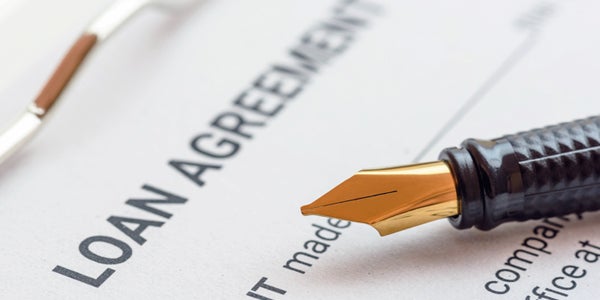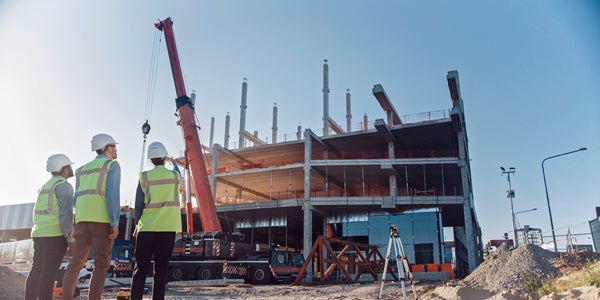As of May 2022, annual inflation hit 8.6%, and the Fed hiked interest rates by .75%, begging questions about the future of CRE and equipment loans. Find out more as we pick apart CRE loans, diving into what business leaders across all branches of industry need to know moving forward.
For those looking to expand or even break ground, understanding how inflation and rising rates will affect your CRE and equipment loans is crucial to financial success.
Everyone has felt inflation's sting in one way or another. Supply chain issues persist in the waning days of the pandemic; meanwhile, the persisting geo-political volatility continues to impact access to resources. Prices are on the rise—and business leaders and consumers alike are concerned that record-high inflation will persist through the second half of 2022 and perhaps well into 2023.
As of May 2022, annual inflation hit 8.6% , with little signs of slowing down. In a move we haven't seen in almost 20 years, the Fed hiked interest rates by .75%, begging questions about the future of CRE and equipment loans. Is it time to invest in a loan-to-own strategy? Or is it more financially beneficial to lease in the short term?
Let's discuss CRE and equipment loans in these inflationary times, diving into what business leaders across all branches of industry need to know moving forward.
Rising Interest Rates and Inflation: What to Expect in 2022

With annual inflation on the cusp of 9%—well over the "acceptable" amount of 2%—the Fed has begun raising interest rates. And as rates go up, CRE and equipment loans become more expensive.
Ultimately, this incentivizes less spending, as there's less money to go around. The idea is to decrease demand without triggering a recession. However, the threat of recession is genuine when the Fed starts modifying interest rates. Indeed, in a recent Senate Banking Committee hearing, Fed Chair Jerome Powell admitted to senators that an upcoming recession “is certainly a possibility, [though] that’s not our intention.”
Increasing borrowing costs effectively discourages spending. This is especially true regarding big-ticket assets. When the Fed “increases rates,” they're really increasing the federal funds rate, the benchmark banks use to borrow money from each other, which ultimately impacts borrowers. While it takes about 12 months for these rate hikes to have any real economic impact, the stock market response is often more immediate.
Thankfully, there are several ways to inflation-proof your business in the coming months. Begin by evaluating your company's financial health and determining where you're starting from. Create an itemized list of assets, debts, and liabilities to paint an all-encompassing picture of the situation.
Your earnings per share (EPS) report is another excellent way to determine your organization's financial health regarding your investors. The higher your ratio, the more financially stable you are—and thus better positioned to consider financing.
Commercial Real Estate: Should You Lease or Buy?

Inflation and interest rates aside, deciding whether to lease or buy is a crucial business decision that can impact your company’s financial position either negatively or positively. Now that the Fed's displayed a willingness to raise rates to fight inflation, business leaders must weigh the pros and cons of leasing vs. buying, and how each will affect their bottom line.
For example, if you lease a building, you tie yourself to a lease period. But once that period ends, you'll enter into a renegotiation phase with the landlord—which could ultimately change the stipulations and rent to which you've grown accustomed.
On the other hand, if you buy the property, you're free to operate by your own rules. Furthermore, you can eventually sell for a profit if that asset appreciates. Of course, buying CRE, and equipment, can require hefty up-front capital. Unless you're flush with expendable cash, that capital will most likely come from CRE and equipment loans. And with interest rates rising, the cost to borrow will be more expensive than ever.
Remember, commercial construction costs themselves are also affected by inflation and skyrocketing fuel prices. Those costs ultimately get passed to the property owners and, in turn, renters.
The obvious benefit of owning CRE is asset appreciation. However, if the current market means you're buying at an inflated price, and rising interest rates are meant to cool the market, that asset may not appreciate to profitable levels. In fact, it may depreciate over the next 10 to 15 years.
The debate between leasing and buying also hinges on the type of space you're looking to invest in. With hybrid and remote work becoming the new standard, office space is readily available. Then again, if you decide that returning to in-office work is the best financial move for your business, then now is the time to invest in office space.
On the other hand, industrial space is a red-hot market. Business leaders will have difficulty finding available space—and when they do, they'll pay an inflated price for it.
CRE Loans: Factors to Consider in 2022
While you may have longer-term investments that could be used for the purchase or even money in the bank, you may want to keep liquid cash on hand for covering increasing expenses on supplies and inputs for your business. Therefore, you may still want to finance—whether you're considering purchasing a property, or looking to refinance.

Regarding underwriting, structure, interest rates, and associated fees, you have several options available when taking out CRE loans. However, those factors ultimately lean on high inflation and rising interest rates.
The decision whether to lease or buy also hinges on where you are in the country. In some areas, you may negotiate leasing terms that are so beneficial that buying wouldn't make any sense.
Today, the average CRE loan ranges anywhere between 3.5%–20%, depending on factors such as property type and creditworthiness. It also depends on the type of lender you're working with—banks and SBA lenders tend to have the lowest rates, while hard money lenders have the highest.
Equipment Financing Amidst the Rising Interest Rates and Inflation
Acquiring equipment entails the same “buy or lease” analysis as when you are considering real estate. Rising rates on equipment loans may make leasing a more attractive alternative to purchasing the equipment you need. After all, now is the perfect time to take full advantage of economic recovery—especially if your business can leverage the $1.2 trillion Infrastructure Investment and Jobs Act (IIJA) recently signed into law.
You'll still have to consider several outlying factors before allocating the capital. For example, prices for used steamship containers are up 120% year over year, while used construction equipment is up 20%. Additionally, as prices continue to rise for new equipment, they'll translate into increased collateral values when your lease finally ends.
Business leaders must also consider deteriorating equipment value. Appraisals cost time and money, which ultimately gets passed to you. You must also consider depreciation when the supply chain inevitably corrects itself and those assets return to "normal" levels.
Capex Budgeting: Facing the Challenges of 2022

Those in charge of finance have several obstacles to overcome regarding CAPEX budgeting in 2022. Inflation and rising interest rates make the lingering threat of cost overruns all too real.
Spurred by rapid economic recovery and increasing demand through the first three quarters of 2021, companies in the S&P 500 allocated $528.4 billion toward capital projects . These investments were 11% higher than the comparable period from 2020 (though the reasons why are rather obvious).
Still, these investments rose globally, including CRE, equipment, and tech. Companies weren't afraid to spend money, and as long as they took the necessary steps to balance CAPEX spending while maximizing productivity, they could reap the rewards of ballooning consumer demand.
Increased spending also rides a wave of increased consumer confidence, as more people felt comfortable spending on discretionary items as life returned relatively back to normal. This rebound forced companies to expand their warehousing capacities while opening new retail stores and data centers in 2022.
You must still minimize CAPEX to get the most out of your investments—and it begins by understanding where you're spending that capital. Construction alone can account for up to 30%–40% of your CAPEX budget. When you're talking about a multi-million dollar plan, even modest savings can equate to hundreds, if not thousands, of dollars. Meanwhile, procurement costs are also a significant expenditure, and a business could see these accounting for up to 40%–50% of the total cost when opening new stores. Even carving out 1–2% savings on procurement costs can lead to substantial savings in CAPEX.
Uncertain Times Are Ahead—Prepare Now!
Many businesses experienced challenges through the first half of 2022 and girded themselves accordingly. But while protecting your business from further inflation and rising rates is crucial, you must still capitalize on potential opportunities as the market fluctuates. Thankfully, you can lean on the expert knowledge of a reliable financial partner like Premier Valley Bank, a division of HTLF Bank to guide you down the right path.
You may be wondering if now is the right time to lease or buy. How will rising rates affect your bottom line? Is it better to buy new or lease used equipment? These questions ultimately hinge on the type of property and equipment you need, your business goals, and your available capital. To answer these questions, get in touch with Premier Valley Bank, a division of HTLF Bank to speak with a commercial banker to help you analyze your financial position today.









